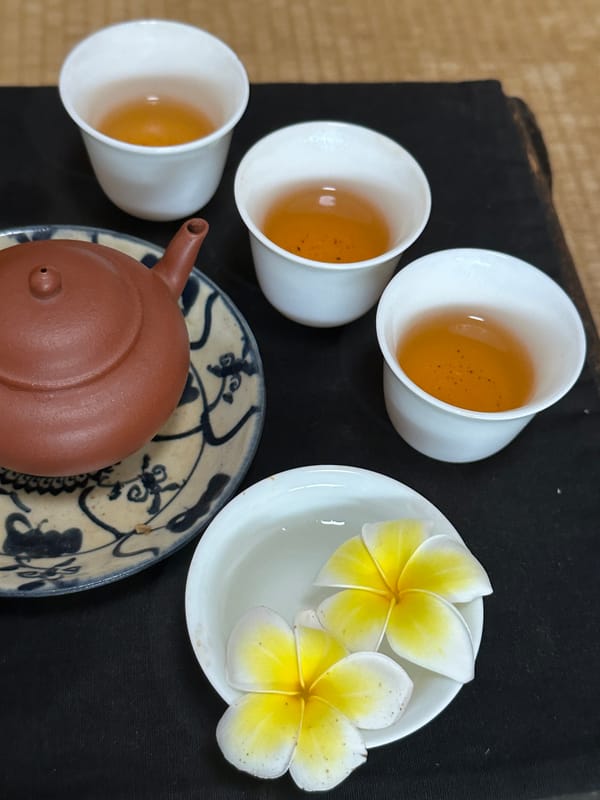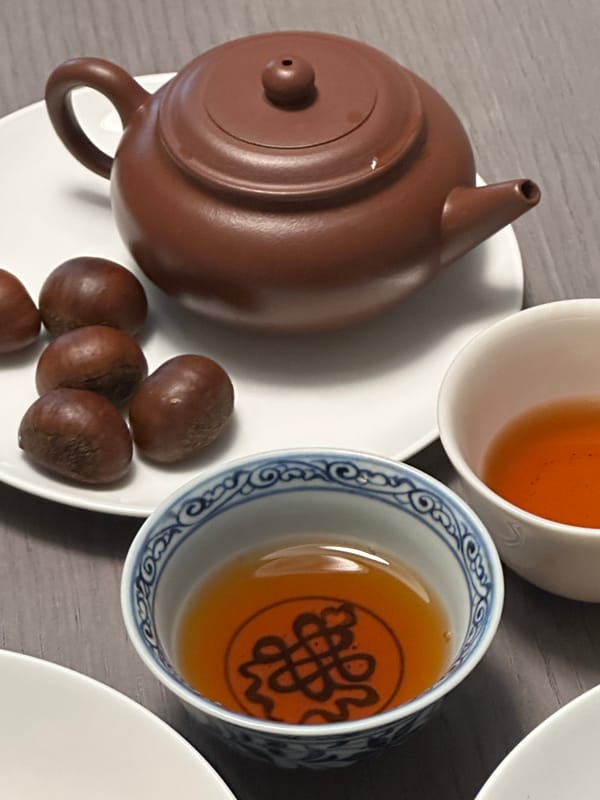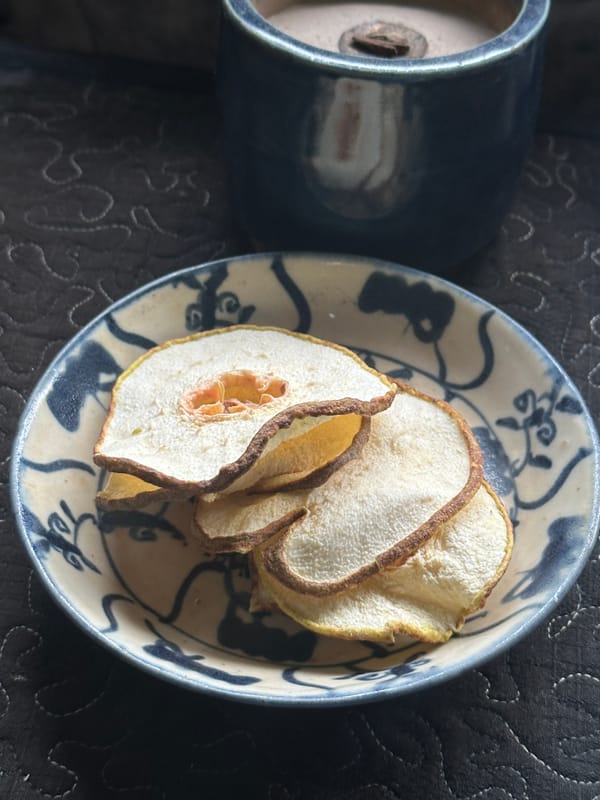At 3 PM, you lift your teacup in one hand and open a packet of cookies with the other. The steam from the tea and the sweet scent of the snack mingle—and suddenly, the flavors feel different. Familiar, yet surprising. Sometimes they blend harmoniously; sometimes they clash like mismatched friends. This subtle shift on your palate is no accident—it’s a silent, flavorful dialogue.
The Extraordinary in the Ordinary
Back when I was a child, my grandmother always brewed a pot of Oolong tea in the afternoon. She’d casually lay out some peanuts or crispy rice crackers on the table. It seemed like nothing special—just a typical snack moment. Only later did I realize that she had been unknowingly performing a delicate and ancient ritual of flavor pairing.
Today, when we walk through convenience stores or supermarkets, we’re faced with an endless variety of snacks. But rarely do we stop to ask: “What tea goes best with these potato chips?” or “Which brew would enhance the flavor of these cookies?”
Yet this is exactly the kind of delicious territory worth exploring.
Tea Is More Than Tea
Before we start pairing, let’s understand the basics of tea.
In simple terms, tea can be divided into six categories: green tea, white tea, yellow tea, Qingcha (Oolong), black tea, and dark tea (such as Pu’er). The main difference lies in the level of fermentation:
- Green tea: Non-fermented, with a grassy freshness and slight bitterness
- White tea: Lightly fermented, offering delicate sweetness and floral hints
- Yellow tea: Between green and Oolong, known for its gentle, grain-like aroma
- Qingcha (Oolong tea): Semi-fermented, with rich, complex aromas
- Black tea: Fully fermented, smooth and sweet with a malty depth
- Dark tea: Post-fermented (like Pu’er), with earthy, aged notes
Each type of tea carries a unique aromatic and taste profile based on how it’s processed—like different musical instruments playing their distinct tones.
Flavor Notes in Classic Taiwanese Snacks
Similarly, the snacks we often take for granted offer more than just a fix for hunger.
Let’s break down a few popular Taiwanese snacks:
- Savory roasted peanuts: Oily, salty, and deeply toasty
- Rice crackers: Mildly sweet, light, and crunchy
- Nori (seaweed): Oceanic umami with a briny sharpness
- Pineapple cakes: Buttery and sweet with subtle acidity
- Mung bean cakes: Bean-rich, dense, and softly crumbly
These snacks may seem simple, but they’re layered with flavor. And when paired with the right tea, they create entirely new sensory experiences.
How to Pair Tea and Snacks: 4 Golden Rules
Tea and snack pairing isn’t arbitrary. There are principles that help guide this flavorful process:
1. Complement Similar Flavors
Flavors with common notes amplify each other. For example, roasted peanuts with caramel-like tones match beautifully with heavily fermented Oolong tea, which often shares that roasted-sweet aroma.
2. Contrast for Balance
Contrasting flavors can create harmony. Salty snacks like nori or chips pair well with subtly sweet teas such as white or black tea. One tempers the other, offering a balanced mouthfeel.
3. Texture Interaction
Snack texture affects the tea experience. Crispy cookies call for mellow teas that won’t overpower them, while denser pastries like mung bean cakes need robust brews to cut through their richness.
4. Mind the Temperature
Tea temperature influences perception. Hot tea can intensify certain flavors, while cold brews reveal different notes. For example, cold-brewed green tea with rice crackers in summer provides a completely different experience than hot tea with the same snack in winter.
Supermarket Discoveries: Surprising Pairings in Everyday Snacks
Let’s go on a snack hunt with your teacup in hand:
Nori x Green Tea
Nori’s oceanic umami and saltiness pair naturally with the vegetal bitterness of green tea—especially Longjing. Try it with Taiwanese pepper-seasoned seaweed or Thai crispy seaweed snacks. The green tea’s clean aroma lifts the umami, while the saltiness smooths out any bitterness. Pro tip: place a small piece of nori on your tongue, then sip the tea. Let them dance together—your afternoon fatigue will vanish in minutes.
Pineapple Cake x Qingcha (Oolong Tea)
The buttery sweetness and light acidity of pineapple cakes pair exquisitely with the floral and fruity notes of Oolong tea. A rich Taiwanese Dong Ding Oolong or a lighter Wenshan Baozhong will cut through the pastry’s richness and enhance its layers. This combo is perfect for reconnecting with old friends on a quiet afternoon.
Peanut Brittle x Black Tea
This is a duet of nostalgia and sophistication. Crispy, sweet peanut brittle (such as those from Yilan or traditional Shaqima) pairs seamlessly with Taiwanese black tea, like Ruby No.18. The tea’s malty and fruity notes blend with the candy’s caramel flavor, and the warm liquid slowly dissolves the crunchy sugar, creating a silky finish—like a miniature concert on your tongue.
Mung Bean Cake x White Tea
A subtle yet stunning pairing. Traditional mung bean cakes or the classic ones from I-Mei go beautifully with Fujian Shoumei white tea. White tea’s understated character doesn’t overpower the gentle bean flavor but rather elevates it. It’s a graceful, silent waltz—perfect for a hot summer afternoon when you crave peace and clarity.
Try It at Home: Build Your Own Tea Snack Ritual
You don’t have to be a tea sommelier or a gourmand to enjoy tea pairings at home. Here are a few simple tips:
- Stay curious – Break the rules, try unexpected combinations
- Taste in sequence – Sip tea, nibble snack, then sip again and notice the change
- Take notes – Write down what worked and why
- Share – Invite friends, compare findings, enjoy together
From Taste to Lifestyle
Pairing tea with snacks isn’t just about flavor. It’s a lifestyle shift.
When we start noticing the little things—like how one tea uplifts a specific bite—our everyday moments begin to sparkle. Brew a good tea, select a snack with care, and you’ve crafted a tiny ritual of self-respect, even on a busy weekday afternoon.
Taiwan’s snack industry generates over NT$10 billion a year. Behind that number are millions of everyday choices. If we add just a bit more mindfulness to those choices, we begin to cultivate taste. And with taste comes quality of life.
Closing Thoughts: Kindred Spirits of the Tea Table
Tea has never stood alone. From its earliest roots, it has always needed the right vessel, the right water—and the right companion on the table.
As tea drinkers, we become matchmakers. We bring together two ingredients—a snack and a tea—that might never have met, and we witness the story that unfolds. They meet, resonate, and perhaps even fall in love.
So the next time you’re standing in front of a snack shelf, or preparing to steep a pot of tea, pause for a second: what snack might be its soulmate?
Like a quiet conversation, the tea speaks, and the snack responds. You don’t need to go anywhere. You just need to open your senses, and let the tea table become your own space of warmth and discovery.
This journey of finding the kindred spirits of the tea table is only just beginning. And Teatasting.net is here to explore it with you.





